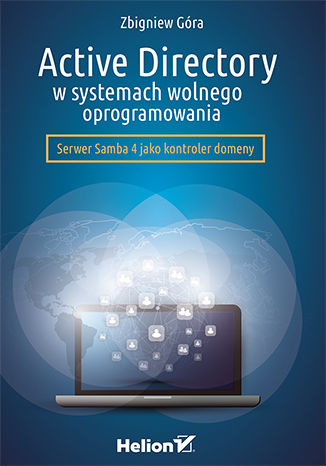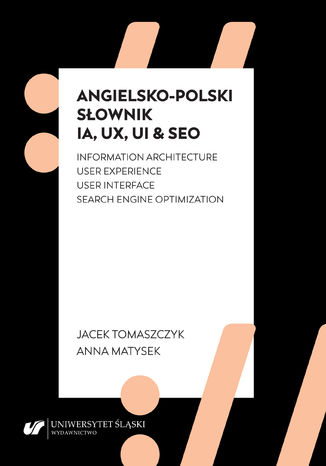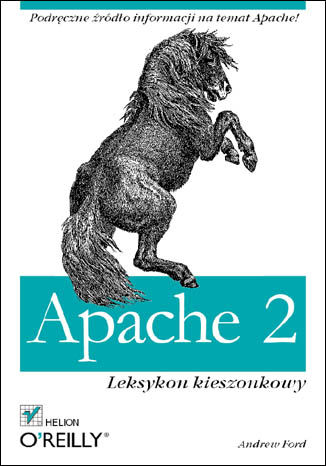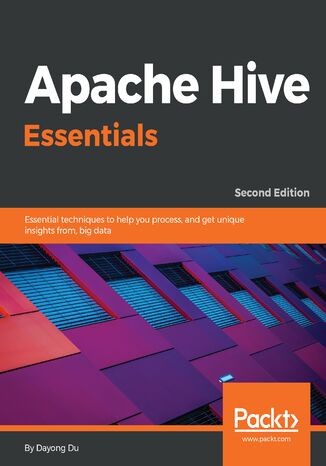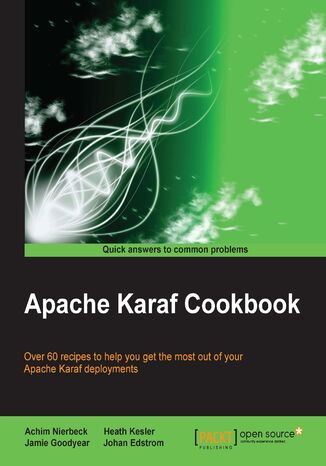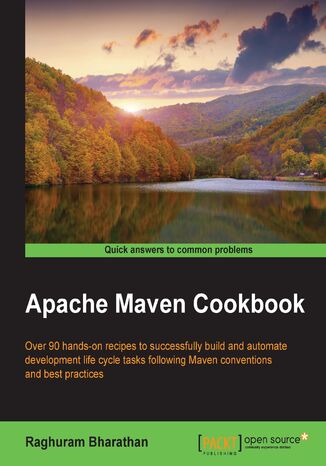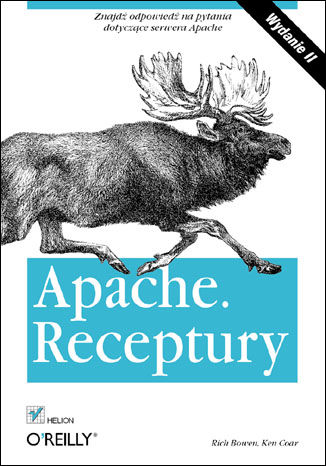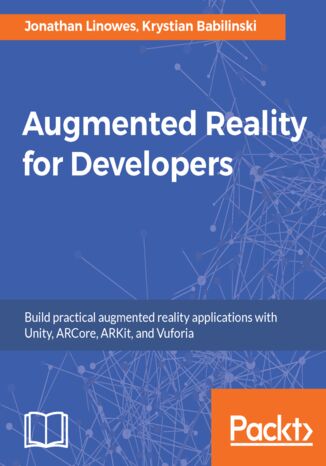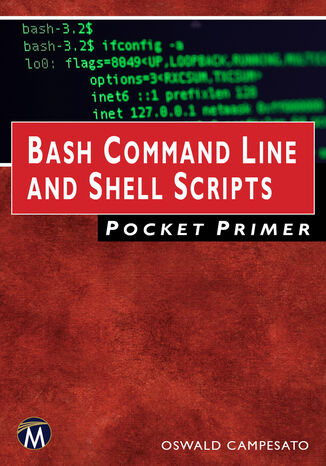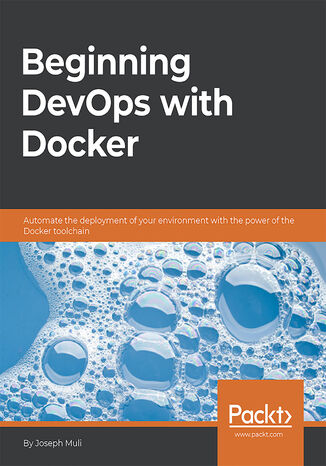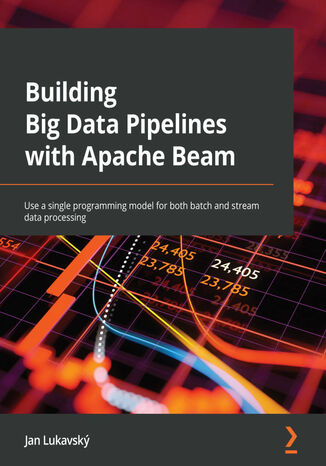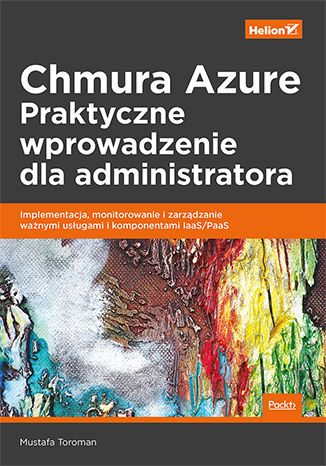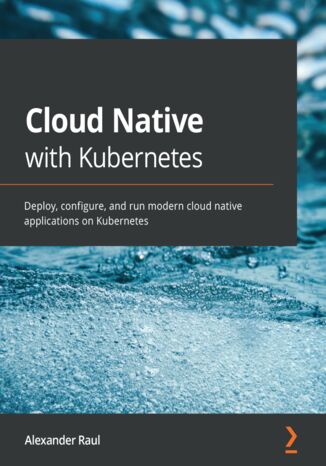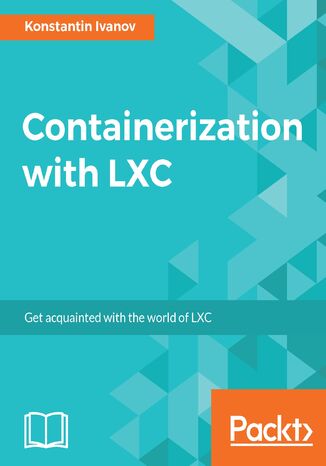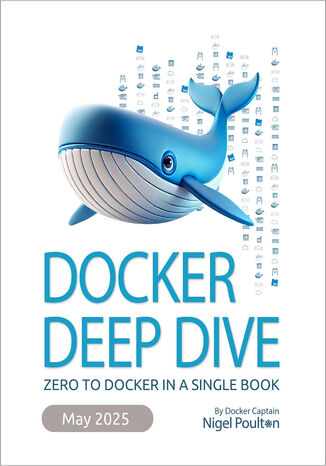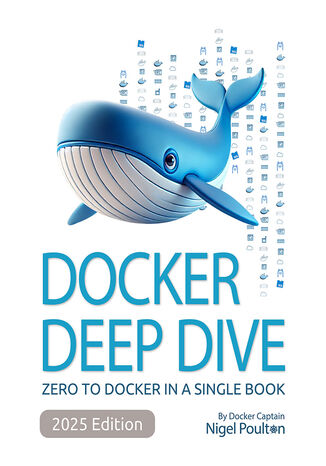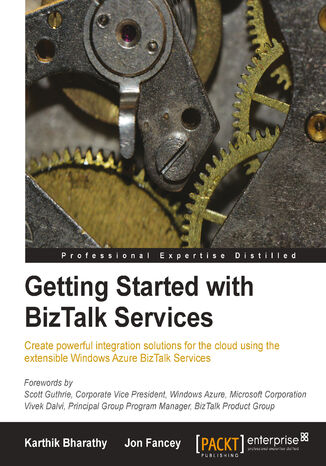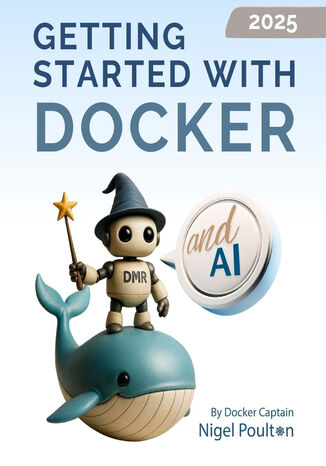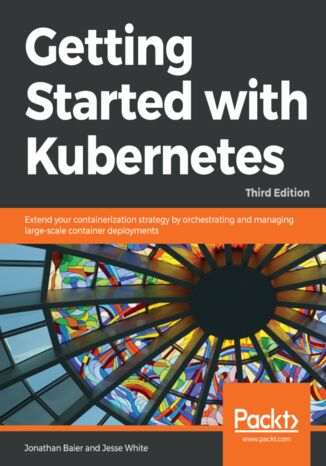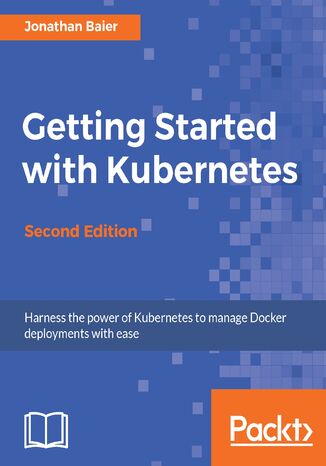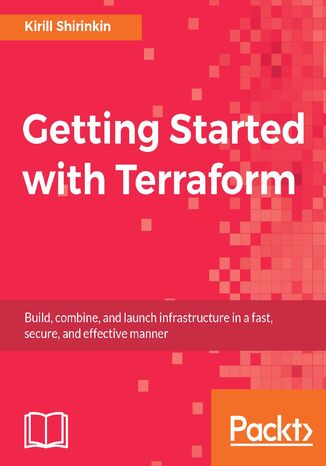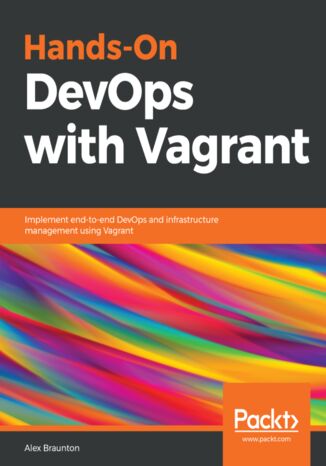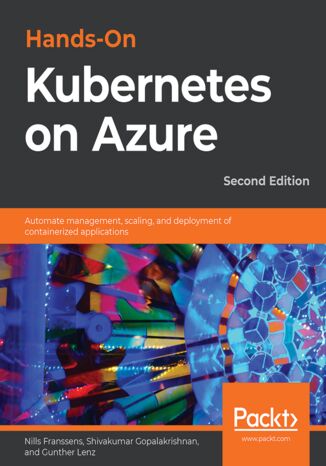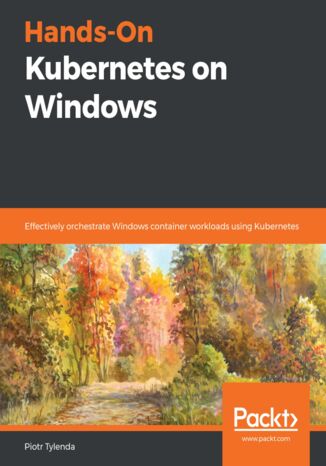Категорії
Електронні книги
-
Бізнес та економіка
- Біткойн
- Ділова жінка
- Коучинг
- Контроль
- Електронний бізнес
- Економіка
- Фінанси
- Фондова біржа та інвестиції
- Особисті компетенції
- Комп'ютер в офісі
- Комунікація та переговори
- Малий бізнес
- Маркетинг
- Мотивація
- Мультимедійне навчання
- Нерухомість
- Переконання та НЛП
- Податки
- Соціальна політика
- Порадники
- Презентації
- Лідерство
- Зв'язки з громадськістю
- Звіти, аналізи
- Секрет
- Соціальні засоби комунікації
- Продаж
- Стартап
- Ваша кар'єра
- Управління
- Управління проектами
- Людські ресурси (HR)
-
Для дітей
-
Для молоді
-
Освіта
-
Енциклопедії, словники
-
Електронна преса
- Architektura i wnętrza
- Безпека життєдіяльності
- Biznes i Ekonomia
- Будинок та сад
- Електронний бізнес
- Ekonomia i finanse
- Езотерика
- Фінанси
- Особисті фінанси
- Бізнес
- Фотографія
- Інформатика
- Відділ кадрів та оплата праці
- Для жінок
- Комп'ютери, Excel
- Бухгалтерія
- Культура та література
- Наукові та академічні
- Охорона навколишнього середовища
- Впливові
- Освіта
- Податки
- Подорожі
- Психологія
- Релігія
- Сільське господарство
- Ринок книг і преси
- Транспорт та спедиція
- Здоров'я та краса
-
Історія
-
Інформатика
- Офісні застосунки
- Бази даних
- Біоінформатика
- Бізнес ІТ
- CAD/CAM
- Digital Lifestyle
- DTP
- Електроніка
- Цифрова фотографія
- Комп'ютерна графіка
- Ігри
- Хакування
- Hardware
- IT w ekonomii
- Наукові пакети
- Шкільні підручники
- Основи комп'ютера
- Програмування
- Мобільне програмування
- Інтернет-сервери
- Комп'ютерні мережі
- Стартап
- Операційні системи
- Штучний інтелект
- Технологія для дітей
- Вебмайстерність
-
Інше
-
Іноземні мови
-
Культура та мистецтво
-
Шкільні читанки
-
Література
- Антології
- Балада
- Біографії та автобіографії
- Для дорослих
- Драми
- Журнали, щоденники, листи
- Епос, епопея
- Нарис
- Наукова фантастика та фантастика
- Фельєтони
- Художня література
- Гумор, сатира
- Інше
- Класичний
- Кримінальний роман
- Нехудожня література
- Художня література
- Mity i legendy
- Лауреати Нобелівської премії
- Новели
- Побутовий роман
- Okultyzm i magia
- Оповідання
- Спогади
- Подорожі
- Оповідна поезія
- Поезія
- Політика
- Науково-популярна
- Роман
- Історичний роман
- Проза
- Пригодницька
- Журналістика
- Роман-репортаж
- Romans i literatura obyczajowa
- Сенсація
- Трилер, жах
- Інтерв'ю та спогади
-
Природничі науки
-
Соціальні науки
-
Шкільні підручники
-
Науково-популярна та академічна
- Археологія
- Bibliotekoznawstwo
- Кінознавство / Теорія кіно
- Філологія
- Польська філологія
- Філософія
- Finanse i bankowość
- Географія
- Економіка
- Торгівля. Світова економіка
- Історія та археологія
- Історія мистецтва і архітектури
- Культурологія
- Мовознавство
- літературні студії
- Логістика
- Математика
- Ліки
- Гуманітарні науки
- Педагогіка
- Навчальні засоби
- Науково-популярна
- Інше
- Психологія
- Соціологія
- Театральні студії
- Богослов’я
- Економічні теорії та науки
- Transport i spedycja
- Фізичне виховання
- Zarządzanie i marketing
-
Порадники
-
Ігрові посібники
-
Професійні та спеціальні порадники
-
Юридична
- Безпека життєдіяльності
- Історія
- Дорожній кодекс. Водійські права
- Юридичні науки
- Охорона здоров'я
- Загальне, компендіум
- Академічні підручники
- Інше
- Закон про будівництво і житло
- Цивільне право
- Фінансове право
- Господарське право
- Господарське та комерційне право
- Кримінальний закон
- Кримінальне право. Кримінальні злочини. Кримінологія
- Міжнародне право
- Міжнародне та іноземне право
- Закон про охорону здоров'я
- Закон про освіту
- Податкове право
- Трудове право та законодавство про соціальне забезпечення
- Громадське, конституційне та адміністративне право
- Кодекс про шлюб і сім'ю
- Аграрне право
- Соціальне право, трудове право
- Законодавство Євросоюзу
- Промисловість
- Сільське господарство та захист навколишнього середовища
- Словники та енциклопедії
- Державні закупівлі
- Управління
-
Путівники та подорожі
- Африка
- Альбоми
- Південна Америка
- Центральна та Північна Америка
- Австралія, Нова Зеландія, Океанія
- Австрія
- Азії
- Балкани
- Близький Схід
- Болгарія
- Китай
- Хорватія
- Чеська Республіка
- Данія
- Єгипет
- Естонія
- Європа
- Франція
- Гори
- Греція
- Іспанія
- Нідерланди
- Ісландія
- Литва
- Латвія
- Mapy, Plany miast, Atlasy
- Мініпутівники
- Німеччина
- Норвегія
- Активні подорожі
- Польща
- Португалія
- Інше
- Przewodniki po hotelach i restauracjach
- Росія
- Румунія
- Словаччина
- Словенія
- Швейцарія
- Швеція
- Світ
- Туреччина
- Україна
- Угорщина
- Велика Британія
- Італія
-
Психологія
- Філософія життя
- Kompetencje psychospołeczne
- Міжособистісне спілкування
- Mindfulness
- Загальне
- Переконання та НЛП
- Академічна психологія
- Психологія душі та розуму
- Психологія праці
- Relacje i związki
- Батьківство та дитяча психологія
- Вирішення проблем
- Інтелектуальний розвиток
- Секрет
- Сексуальність
- Спокушання
- Зовнішній вигляд та імідж
- Філософія життя
-
Релігія
-
Спорт, фітнес, дієти
-
Техніка і механіка
Аудіокниги
-
Бізнес та економіка
- Біткойн
- Ділова жінка
- Коучинг
- Контроль
- Електронний бізнес
- Економіка
- Фінанси
- Фондова біржа та інвестиції
- Особисті компетенції
- Комунікація та переговори
- Малий бізнес
- Маркетинг
- Мотивація
- Нерухомість
- Переконання та НЛП
- Податки
- Соціальна політика
- Порадники
- Презентації
- Лідерство
- Зв'язки з громадськістю
- Секрет
- Соціальні засоби комунікації
- Продаж
- Стартап
- Ваша кар'єра
- Управління
- Управління проектами
- Людські ресурси (HR)
-
Для дітей
-
Для молоді
-
Освіта
-
Енциклопедії, словники
-
Електронна преса
-
Історія
-
Інформатика
-
Інше
-
Іноземні мови
-
Культура та мистецтво
-
Шкільні читанки
-
Література
- Антології
- Балада
- Біографії та автобіографії
- Для дорослих
- Драми
- Журнали, щоденники, листи
- Епос, епопея
- Нарис
- Наукова фантастика та фантастика
- Фельєтони
- Художня література
- Гумор, сатира
- Інше
- Класичний
- Кримінальний роман
- Нехудожня література
- Художня література
- Mity i legendy
- Лауреати Нобелівської премії
- Новели
- Побутовий роман
- Okultyzm i magia
- Оповідання
- Спогади
- Подорожі
- Поезія
- Політика
- Науково-популярна
- Роман
- Історичний роман
- Проза
- Пригодницька
- Журналістика
- Роман-репортаж
- Romans i literatura obyczajowa
- Сенсація
- Трилер, жах
- Інтерв'ю та спогади
-
Природничі науки
-
Соціальні науки
-
Науково-популярна та академічна
-
Порадники
-
Професійні та спеціальні порадники
-
Юридична
-
Путівники та подорожі
-
Психологія
- Філософія життя
- Міжособистісне спілкування
- Mindfulness
- Загальне
- Переконання та НЛП
- Академічна психологія
- Психологія душі та розуму
- Психологія праці
- Relacje i związki
- Батьківство та дитяча психологія
- Вирішення проблем
- Інтелектуальний розвиток
- Секрет
- Сексуальність
- Спокушання
- Зовнішній вигляд та імідж
- Філософія життя
-
Релігія
-
Спорт, фітнес, дієти
-
Техніка і механіка
Відеокурси
-
Бази даних
-
Big Data
-
Biznes, ekonomia i marketing
-
Кібербезпека
-
Data Science
-
DevOps
-
Для дітей
-
Електроніка
-
Графіка / Відео / CAX
-
Ігри
-
Microsoft Office
-
Інструменти розробки
-
Програмування
-
Особистісний розвиток
-
Комп'ютерні мережі
-
Операційні системи
-
Тестування програмного забезпечення
-
Мобільні пристрої
-
UX/UI
-
Веброзробка, Web development
-
Управління
Подкасти
- Електронні книги
- Інформатика
- Інтернет-сервери
Інтернет-сервери
W naszej bibliotece cyfrowej znajdziesz książki, które przybliżają podstawowe zagadnienia związane z instalowaniem, konfigurowaniem i zarządzaniem serwerami. Oprócz tego dokładnie przybliżają one takie technologie jak Chmura Azure, OpenDaylight, Docker, czy Samba. Dzięki tym podręcznikom serwery internetowe nie będą miały przed Tobą tajemnic.
Active Directory w systemach wolnego oprogramowania
Serwer Samba 4 jako kontroler domeny. Szczypta teorii i historii, czyli co to jest Active Directory i jak działa w różnych systemach operacyjnych Samba 4 a Active Directory, czyli jak uruchomić usługę katalogową pod Linuksem Współdziałanie elementów sieci, czyli jak podłączyć komputery klienckie i skonfigurować sieć Podstawą działania każdej sieci komputerowej jest hierarchiczna struktura, której wewnętrzna logika decyduje o miejscu i roli elementów składowych oraz o relacjach między nimi. Tę strukturę zapewnia usługa katalogowa Active Directory, pozwalająca uporządkować wszystkie obiekty w sieci firmowej i wygodnie nimi zarządzać. Ponieważ jest to rozwiązanie kosztowne, warto postawić na równie funkcjonalną darmową alternatywę — serwer Samba 4. Świetnie sprawdzi się w roli kontrolera domeny Active Directory w systemach wolnego oprogramowania. Jeśli chcesz zaoszczędzić, a przy okazji poszerzyć swoją wiedzę, to książka dla Ciebie! Ten poradnik zawiera praktyczne i konkretne wskazówki dotyczące konfiguracji kontrolera domeny w systemie Linux oraz dopasowania usług do oczekiwań administratora i użytkowników. Dowiesz się stąd, co to jest Samba 4 i jak przygotować środowisko testowe dla Twojej sieci. Posłużysz się jasnymi instrukcjami instalacyjnymi i konfiguracyjnymi, by uruchomić Active Directory. Znajdziesz tu także opisy podłączania do tego środowiska komputerów klienckich działających w różnych systemach operacyjnych. Administratorze sieci, sprawdź, jak bardzo ta książka może ułatwić Ci życie! Podstawy działania Active Directory Przygotowanie laboratorium testowego Linux jako kontroler domeny Active Directory Serwer pełniący role punktu dostępowego i serwera DHCP Podłączanie komputerów klienckich do domeny Zarządzanie Active Directory i serwerem Samba 4 poprzez konsolę Linux Samba 4 jako serwer drukarek Serwer czasu NTP Samba 4 jako dodatkowy kontroler istniejącej domeny „Replikacja” SysVol na linuksowych kontrolerach Samba 4 Instalacja serwera Apache i konfiguracja foldera stron użytkowników domeny Active Directory, Linux i Samba 4 — filary Twojej sieci! Bezbłędnie skonfiguruj kontroler domeny w Linuksie!
Angielsko-polski słownik IA, UX, UI & SEO
Anna Matysek, Jacek Tomaszczyk
Angielsko-polski słownik IA, UX, UI & SEO to pierwsze w Polsce opracowanie słownikowe tematyki z zakresu architektury informacji, wrażeń i interfejsów użytkownika oraz badań użyteczności i optymalizacji serwisów internetowych. Tak licznego i uporządkowanego zbioru słownictwa tej branży nie znajdziemy nawet w światowych zasobach terminologicznych. Autorzy zgromadzili kolekcję ok. 4800 terminów i wyrażeń specjalistycznych, którym przypisali polskie odpowiedniki, a często także objaśnienia, dopowiedzenia i odsyłacze. Do wszystkich wyrazów hasłowych podano wymowę reprezentowaną za pomocą International Phonetic Alphabet. Adresatem słownika są przede wszystkim studenci kierunku architektura informacji oraz projektowanie przestrzeni informacyjnych. Słownik powinien także znaleźć liczne grono odbiorców wśród osób zainteresowanych projektowaniem serwisów internetowych oraz tworzeniem i marketingiem produktów i usług cyfrowych.
Apache 2. Leksykon kieszonkowy
Podręczne źródło informacji na temat Apache! Jak wykorzystać mechanizm mod_rewrite? Jak kontrolować dostęp do zasobów? Jak stosować bezpieczny protokół SSL? Apache jest jednym z najpopularniejszych serwerów HTTP. Jego zalety to niezawodność, wydajność i elastyczność. Można go uruchomić praktycznie w dowolnym systemie. Istotny jest również fakt, że Apache to rozwiązanie całkowicie bezpłatne! Pierwsza oficjalna wersja tego serwera ukazała się w 1995 roku. Oznaczono ją numerem 0.6.2. Po blisko piętnastu latach rozwiązanie to zyskało ogromną rzeszę użytkowników. Społeczność związana z tym narzędziem jest niezwykle chętna do pomocy, co niewątpliwie stanowi jeszcze jeden niezmiernie ważny atut, przemawiający na korzyść Apache. Niniejszy leksykon jest świetną pozycją dla tych osób, które miały już styczność z serwerem Apache lub chcą szybko opanować konkretne zagadnienia związane z jego konfiguracją. Dzięki tej książce poznasz wszystkie dyrektywy, które mogą być przydatne w codziennej pracy. Dowiesz się, jak skonfigurować środowisko serwera, oraz poznasz zasady odwzorowywania adresów URL. Ponadto nauczysz się zapewniać odpowiednią kontrolę dostępu do poszczególnych zasobów i korzystać z takich mechanizmów, jak filtry, metadane lub procedury obsługi. Wiele cennych informacji, zawartych w tej poręcznej książce, sprawi, że codzienna praca z serwerem Apache będzie dla Ciebie przyjemnością! Ogólne zagadnienia związane z pracą i konfiguracją Apache Konfiguracja wirtualnych hostów (VirtualHost) Zarządzanie procesami Odwzorowanie adresów URL Przekształcanie adresów z wykorzystaniem mod_rewrite Kontrola dostępu Uwierzytelnianie z użyciem mechanizmów HTTP Basic, HTTP Digest Zastosowanie metadanych dokumentów Manipulowanie nagłówkami HTTP Wykorzystanie skryptów CGI Zastosowanie WebDAV Używanie filtrów Buforowanie treści Konfiguracja i wykorzystanie bezpiecznego protokołu SSL Logowanie zdarzeń Skonfiguruj Apache zgodnie ze swoimi potrzebami!
In this book, we prepare you for your journey into big data by frstly introducing you to backgrounds in the big data domain, alongwith the process of setting up and getting familiar with your Hive working environment. Next, the book guides you through discovering and transforming the values of big data with the help of examples. It also hones your skills in using the Hive language in an effcient manner. Toward the end, the book focuses on advanced topics, such as performance, security, and extensions in Hive, which will guide you on exciting adventures on this worthwhile big data journey. By the end of the book, you will be familiar with Hive and able to work effeciently to find solutions to big data problems
Czy wiesz, jaki serwer HTTP jest najpopularniejszy w sieci? Właśnie tak, jest to Apache! W lipcu 2008 roku jego udział w rynku wynosił blisko 50% (według Netcraft). Historia tego serwera sięga roku 1995, kiedy ukazała się jego pierwsza oficjalna wersja, oznaczona numerem 0.6.2. Cechy, które zadecydowały o sukcesie tego rozwiązania, to bezpieczeństwo, skalowalność, wielowątkowość i obsługa różnorodnych języków skryptowych. Dzięki książce "Apache. Receptury" zapoznasz się z gotowymi przepisami na rozwiązanie ciekawych, specyficznych oraz intrygujących problemów. Nauczysz się instalować serwer z różnych źródeł oraz na różnych platformach. Dowiesz się, w jaki sposób zwiększyć jego bezpieczeństwo, jak uruchomić serwery wirtualne oraz poprawić wydajność Apache. Autorzy książki pokażą Ci, jak uruchomić obsługę języków skryptowych, tak aby serwowane strony stały się dynamiczne. Cała wiedza zostanie przedstawiona w sprawdzony w tej serii sposób: problem - rozwiązanie - analiza. Sposoby instalacji serwera Apache Dodawanie funkcjonalności dzięki modułom Możliwości rejestracji zdarzeń Konfiguracja serwerów wirtualnych Wykorzystanie aliasów, przekierowań oraz przepisań (mod_rewrite) Zarządzanie dostępem do serwowanych zasobów Bezpieczeństwo serwera Apache Wykorzystanie szyfrowanej transmisji - protokół SSL Zapewnienie wydajności Wykorzystanie języków skryptowych Oto książka z najlepszymi przepisami na Apache!
Jonathan Linowes, Krystian Babilinski
Augmented Reality brings with it a set of challenges that are unseen and unheard of for traditional web and mobile developers. This book is your gateway to Augmented Reality development—not a theoretical showpiece for your bookshelf, but a handbook you will keep by your desk while coding and architecting your first AR app and for years to come.The book opens with an introduction to Augmented Reality, including markets, technologies, and development tools. You will begin by setting up your development machine for Android, iOS, and Windows development, learning the basics of using Unity and the Vuforia AR platform as well as the open source ARToolKit and Microsoft Mixed Reality Toolkit. You will also receive an introduction to Apple's ARKit and Google's ARCore! You will then focus on building AR applications, exploring a variety of recognition targeting methods. You will go through multiple complete projects illustrating key market sectors including business marketing, education, industrial training, and gaming. By the end of the book, you will have gained the necessary knowledge to make quality content appropriate for a range of AR devices, platforms, and intended uses.
Bash Command Line and Shell Scripts Pocket Primer. Mastering Bash Commands and Scripting Techniques
Mercury Learning and Information, Oswald Campesato
As part of the best-selling Pocket Primer series, this book introduces readers to useful command-line utilities for creating powerful shell scripts. It focuses on the “bash” command set, though many concepts apply to other command shells like sh, ksh, zsh, and csh. The book covers piping data between commands and using versatile sed and awk commands. Aimed at beginners, it also serves as a good reference for those with some experience in shell scripting.The journey starts with an introduction to bash, covering files and directories, useful commands, and conditional logic with loops. Readers then learn to filter data with grep, transform data with sed, and work with awk. The book introduces shell scripts, showcasing their use with grep and awk for data manipulation. Various scripts are provided for data scientists and analysts needing shell-based solutions for text file cleaning.Understanding these concepts is crucial for simplifying routine tasks and creating efficient shell scripts. This book transitions readers from novices to proficient scriptwriters, combining theoretical knowledge and practical skills. Companion files with source code examples enhance learning. By the end, readers will be equipped to implement shell scripts in real-world scenarios.
Making sure that your application runs across different systems as intended is quickly becoming a standard development requirement. With Docker, you can ensure that what you build will behave the way you expect it to, regardless of where it's deployed. By guiding you through Docker from start to finish (from installation, to the Docker Registry, all the way through to working with Docker Swarms), we’ll equip you with the skills you need to migrate your workflow to Docker with complete confidence.
Apache Beam is an open source unified programming model for implementing and executing data processing pipelines, including Extract, Transform, and Load (ETL), batch, and stream processing.This book will help you to confidently build data processing pipelines with Apache Beam. You’ll start with an overview of Apache Beam and understand how to use it to implement basic pipelines. You’ll also learn how to test and run the pipelines efficiently. As you progress, you’ll explore how to structure your code for reusability and also use various Domain Specific Languages (DSLs). Later chapters will show you how to use schemas and query your data using (streaming) SQL. Finally, you’ll understand advanced Apache Beam concepts, such as implementing your own I/O connectors.By the end of this book, you’ll have gained a deep understanding of the Apache Beam model and be able to apply it to solve problems.
Decyzja o przeniesieniu zasobów informatycznych do chmury jest podejmowana najczęściej wtedy, gdy niezawodność i bezpieczeństwo systemu są dla firmy sprawą kluczową. Jeśli chodzi o rozwiązania oparte na chmurze obliczeniowej, warto zainteresować się Azure. Azure udostępnia takie usługi, by umożliwić rozbudowę i monitorowanie aplikacji, baz danych czy innych usług oraz zarządzanie nimi w sposób globalny. Pozwala na ciągłe dostarczanie znakomitych, innowacyjnych rozwiązań. Umożliwia wirtualizację rozmaitych systemów, takich jak Windows, Linux, dystrybucje serwerowe, strony WWW, aplikacje ASP .NET, systemy CMS, bazy danych czy rozproszone klastry obliczeniowe. Oto praktyczne wprowadzenie do Azure. Wyjaśniono tu wiele pojęć potrzebnych w pracy administratora, takich jak sieci wirtualne oraz koncepcja IaaS. Omówiono zasady pracy z Azure oraz pokazano, jak można przygotować platformę do wdrożenia własnego systemu. Od strony praktycznej przedstawiono tworzenie zaawansowanych usług w platformie Azure. Sporo miejsca poświęcono najważniejszym kwestiom bezpieczeństwa i administracji, zaprezentowano też szereg dobrych praktyk, a także sporo technik ułatwiających rozwiązywanie najczęstszych problemów. Książka jest napisana w zwięzły i przystępny sposób. Dzięki niej szybko i skutecznie zaczniesz administrować zasobami w chmurze Azure. W tej książce między innymi: podstawowe pojęcia, koncepcje i modele związane z chmurą obliczeniową tworzenie i konfiguracja wirtualnej maszyny Azure praca z bazami danych, usługi IaaS i PaaS usługi hybrydowe, implementacja i zarządzanie tożsamość i bezpieczeństwo zasobów w chmurze Azure Chmura Azure: przenieś swój system na wyższy poziom!
Kubernetes is a modern cloud native container orchestration tool and one of the most popular open source projects worldwide. In addition to the technology being powerful and highly flexible, Kubernetes engineers are in high demand across the industry.This book is a comprehensive guide to deploying, securing, and operating modern cloud native applications on Kubernetes. From the fundamentals to Kubernetes best practices, the book covers essential aspects of configuring applications. You’ll even explore real-world techniques for running clusters in production, tips for setting up observability for cluster resources, and valuable troubleshooting techniques. Finally, you’ll learn how to extend and customize Kubernetes, as well as gaining tips for deploying service meshes, serverless tooling, and more on your cluster.By the end of this Kubernetes book, you’ll be equipped with the tools you need to confidently run and extend modern applications on Kubernetes.
Containerization with LXC. Build, manage, and configure Linux containers
In recent years, containers have gained wide adoption by businesses running a variety of application loads. This became possible largely due to the advent of kernel namespaces and better resource management with control groups (cgroups). Linux containers (LXC) are a direct implementation of those kernel features that provide operating system level virtualization without the overhead of a hypervisor layer. This book starts by introducing the foundational concepts behind the implementation of LXC, then moves into the practical aspects of installing and configuring LXC containers. Moving on, you will explore container networking, security, and backups. You will also learn how to deploy LXC with technologies like Open Stack and Vagrant. By the end of the book, you will have a solid grasp of how LXC is implemented and how to run production applications in a highly available and scalable way.
Docker Deep Dive. Zero to Docker in a single book - Fifth Edition
Docker Deep Dive provides a comprehensive introduction to container technology and Docker’s essential role in modern software development. It covers installation across platforms and presents both developer and operational perspectives to build a solid foundation. Early chapters explain container basics, Docker architecture, and key ecosystem standards.The book then explores advanced technical topics including the Docker Engine, image and container management, application containerization, and multi-container apps with Docker Compose. It guides readers through deploying and managing Docker Swarm clusters and introduces emerging areas like WebAssembly containers and AI workloads with Docker Model Runner.Extensive coverage of networking, persistent storage, and security equips readers with enterprise-grade skills for deploying and maintaining containerized applications. The practical approach ensures confidence in implementing Docker solutions for development and production environments.This newly updated edition includes a brand-new chapter on Docker Model Runner with a full AI LLM project, updates to BuildKit, buildx, Docker Build Cloud, debugging tools, WebAssembly content, and a streamlined Docker Swarm chapter.
Docker Deep Dive. Zero to Docker in a single book - Fourth Edition
This book begins by introducing Docker, its transformative role in modern application development, and why containerization has become essential in the tech industry. The first part builds a strong foundation by explaining core concepts such as containers, images, and the benefits of cloud-native development. Readers will also learn the history of Docker, its comparison to virtual machines, and how it is shaping emerging technologies like AI, WebAssembly, and Kubernetes.The second part dives deep into hands-on technical skills. Readers will explore Docker Engine architecture, work with images, containers, and multi-container apps, and use Docker Compose for real-world scenarios. Topics like container orchestration with Docker Swarm, advanced networking, overlay networks, and persistent storage are explained in detail. Readers will also gain practical knowledge on security, debugging containers, and vulnerability scanning with Docker Scout.By the end, readers will have a comprehensive understanding of Docker, from setup to scaling production-grade applications. Whether deploying AI-based apps, containerizing existing workloads, or mastering orchestration, this book provides the skills needed to thrive in a rapidly evolving tech landscape.
This hands-on guide is designed to take you from zero to Docker-ready, combining clear explanations with practical examples. You’ll begin by exploring the fundamentals of containers, Docker architecture, and key concepts like images, registries, and the role of containers in microservices and AI. Early chapters lay a strong foundation, demystifying industry jargon and highlighting how containers differ from traditional virtual machines.Once the basics are in place, the book moves into real-world usage. You’ll install Docker, run your first containers, and learn how to manage them with Docker Desktop. You’ll then containerize a simple web app, push images to Docker Hub, and build multi-container microservices applications using Docker Compose. These hands-on labs build both confidence and competency through guided, project-based learning.This newly updated edition adds a dedicated chapter on AI integration using the new Docker Model Runner. You'll deploy local AI models, integrate with Open WebUI, and see how Docker now powers modern AI workflows. This book is ideal for anyone looking to master Docker while also gaining experience in deploying containerized AI solutions.
Kubernetes has continued to grow and achieve broad adoption across various industries, helping you to orchestrate and automate container deployments on a massive scale.Based on the recent release of Kubernetes 1.12, Getting Started with Kubernetes gives you a complete understanding of how to install a Kubernetes cluster. The book focuses on core Kubernetes constructs, such as pods, services, replica sets, replication controllers, and labels. You will understand cluster-level networking in Kubernetes, and learn to set up external access to applications running in the cluster. As you make your way through the book, you'll understand how to manage deployments and perform updates with minimal downtime. In addition to this, you will explore operational aspects of Kubernetes , such as monitoring and logging, later moving on to advanced concepts such as container security and cluster federation. You'll get to grips with integrating your build pipeline and deployments within a Kubernetes cluster, and be able to understand and interact with open source projects. In the concluding chapters, you'll orchestrate updates behind the scenes, avoid downtime on your cluster, and deal with underlying cloud provider instability within your cluster.By the end of this book, you'll have a complete understanding of the Kubernetes platform and will start deploying applications on it.
Kubernetes has continued to grow and achieve broad adoption across various industries, helping you to orchestrate and automate container deployments on a massive scale.This book will give you a complete understanding of Kubernetes and how to get a cluster up and running. You will develop an understanding of the installation and configuration process. The book will then focus on the core Kubernetes constructs such as pods, services, replica sets, replication controllers, and labels. You will also understand how cluster level networking is done in Kubernetes. The book will also show you how to manage deployments and perform updates with minimal downtime. Additionally, you will learn about operational aspects of Kubernetes such as monitoring and logging. Advanced concepts such as container security and cluster federation will also be covered. Finally, you will learn about the wider Kubernetes ecosystem with OCP, CoreOS, and Tectonic and explore the third-party extensions and tools that can be used with Kubernetes.By the end of the book, you will have a complete understanding of the Kubernetes platform and will start deploying applications on it.
Getting Started with Terraform. Infrastructure automation made easy
Terraform is a tool used to efficiently build, configure, and improve production infrastructure. It can manage existing infrastructure as well as create custom in-house solutions. This book shows you when and how to implement infrastructure as a code practices with Terraform. It covers everything necessary to set up complete management of infrastructure with Terraform, starting with the basics of using providers and resources. This book is a comprehensive guide that begins with very small infrastructure templates and takes you all the way to managing complex systems, all using concrete examples that evolve over the course of the book. It finishes with the complete workflow of managing a production infrastructure as code – this is achieved with the help of version control and continuous integration. At the end of this book, you will be familiar with advanced techniques such as multi-provider support and multiple remote modules.
Hands-On DevOps with Vagrant teaches you how to use Vagrant as a powerful DevOps tool and gives an overview of how it fits into the DevOps landscape. You will learn how to install VirtualBox and Vagrant in Windows, macOS, and Linux. You will then move on to understanding Vagrant commands, discovering its boxes and Vagrant Cloud.After getting to grips with the basics, the next set of chapters helps you to understand how to configure Vagrant, along with networking. You will explore multimachine, followed by studying how to create multiple environments and the communication between them. In addition to this, you will cover concepts such as Vagrant plugins and file syncing.The last set of chapters provides insights into provisioning shell scripts, also guiding you in how to use Vagrant with configuration management tools such as Chef, Ansible, Docker, Puppet, and Salt.By the end of this book, you will have grasped Vagrant’s features and how to use them for your benefit with the help of tips and tricks.
Nills Franssens, Shivakumar Gopalakrishnan, Gunther Lenz
From managing versioning efficiently to improving security and portability, technologies such as Kubernetes and Docker have greatly helped cloud deployments and application development.Starting with an introduction to Docker, Kubernetes, and Azure Kubernetes Service (AKS), this book will guide you through deploying an AKS cluster in different ways. You’ll then explore the Azure portal by deploying a sample guestbook application on AKS and installing complex Kubernetes apps using Helm. With the help of real-world examples, you'll also get to grips with scaling your application and cluster. As you advance, you'll understand how to overcome common challenges in AKS and secure your application with HTTPS and Azure AD (Active Directory). Finally, you’ll explore serverless functions such as HTTP triggered Azure functions and queue triggered functions.By the end of this Kubernetes book, you’ll be well-versed with the fundamentals of Azure Kubernetes Service and be able to deploy containerized workloads on Microsoft Azure with minimal management overhead.
Hands-On Kubernetes on Windows. Effectively orchestrate Windows container workloads using Kubernetes
With the adoption of Windows containers in Kubernetes, you can now fully leverage the flexibility and robustness of the Kubernetes container orchestration system in the Windows ecosystem. This support will enable you to create new Windows applications and migrate existing ones to the cloud-native stack with the same ease as for Linux-oriented cloud applications.This practical guide takes you through the key concepts involved in packaging Windows-distributed applications into containers and orchestrating these using Kubernetes. You'll also understand the current limitations of Windows support in Kubernetes. As you advance, you'll gain hands-on experience deploying a fully functional hybrid Linux/Windows Kubernetes cluster for development, and explore production scenarios in on-premises and cloud environments, such as Microsoft Azure Kubernetes Service.By the end of this book, you'll be well-versed with containerization, microservices architecture, and the critical considerations for running Kubernetes in production environments successfully.

